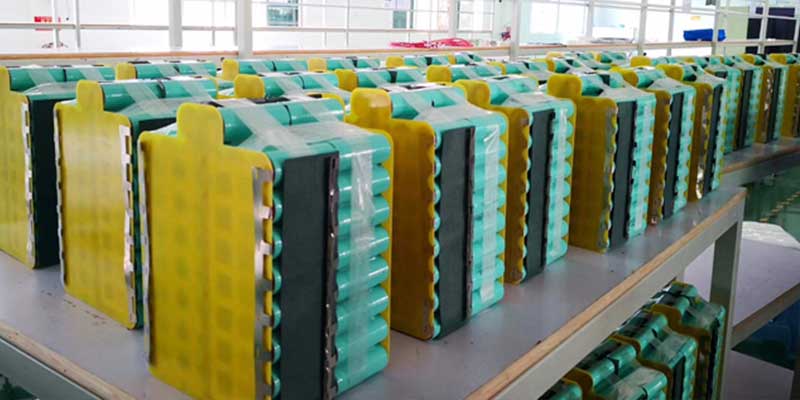What is li ion battery
Introduction to Lithium-Ion Batteries
Lithium-ion batteries are more than just a power source; they are a transformative technology that has revolutionized energy storage across many sectors. From powering the smallest consumer electronics to driving the biggest electric vehicles, lithium-ion batteries have become synonymous with efficiency and reliability.
Historical Context:
-
Development: The development of lithium-ion batteries began in the 1970s, with the first non-rechargeable lithium batteries. The rechargeable versions were commercially introduced by Sony in 1991, after which they rapidly began to replace older nickel-cadmium batteries, due to their superior characteristics.
-
Innovation and Improvement: Over the decades, continuous improvements in cathode materials and electrolyte solutions have significantly increased the energy density, cycle life, and safety of these batteries.
Fundamental Properties:
-
Chemistry and Composition: At their core, lithium-ion batteries consist of three main components: a lithium-based cathode, a carbon anode, and an electrolyte. The choice of materials for the cathode and anode and the quality of the electrolyte play critical roles in defining the battery’s performance, temperature range, and safety.
-
Energy Storage Mechanism: These batteries store energy through the movement of lithium ions between the cathode and anode during charge and discharge cycles. This ionic movement is facilitated by the electrolyte, which supports ionic conductivity while insulating electrical contacts to prevent short circuits.
Detailed Working of Lithium-Ion Batteries
Understanding the electrochemical reaction that powers lithium-ion batteries provides insights into their efficiency and capabilities:
-
During Discharge:
-
The Movement of Ions: When the battery discharges, lithium ions move from the anode to the cathode through the electrolyte while electrons flow through the external circuit to power the device.
-
Energy Release: The movement of electrons from the anode to the cathode through the external circuit releases energy, which is harnessed to power electronic devices.
-
-
During Charging:
-
Ion Migration: During charging, an external electrical power source forces electrons to move back to the anode, pushing lithium ions back through the electrolyte from the cathode to the anode.
-
Energy Storage: This movement recharges the battery by restoring the lithium ions to their original position in the anode, readying the battery for another discharge cycle.
-
Charging Dynamics:
-
Rate of Charging: The rate at which a lithium-ion battery can be charged is dependent on the speed at which the lithium ions can safely migrate from the cathode to the anode without causing undue stress or heat, which could degrade the battery’s materials.
-
Thermal Management: Proper thermal management during charging is crucial to maintaining battery integrity and longevity. Excessive heat during charging can lead to thermal runaway, which can damage the battery or, in extreme cases, cause it to catch fire or explode.
Applications of Lithium-Ion Batteries
The versatility of lithium-ion batteries can be seen in their wide range of applications, each benefiting from different aspects of the technology:
-
Consumer Electronics:
-
Devices Powered: Smartphones, laptops, tablets, and portable power tools all rely on lithium-ion batteries for their energy needs.
-
Benefits Utilized: The high energy density and ability to scale down in size make lithium-ion batteries ideal for portable devices.
-
-
Electric Vehicles (EVs):
-
Role in EVs: Lithium-ion batteries are critical for the propulsion of electric vehicles. They provide the high energy necessary to power electric motors and manage the extensive range of requirements.
-
Innovation in EVs: The push for more efficient and longer-lasting batteries has led to innovations in lithium-ion technology, particularly in increasing the range and reducing the charging time.
-
-
RenXtorage for Renewable Energy:
-
Integration with Renewable Sources: Lithium-ion batteries are increasingly used to store energy from renewable sources such as solar and wind, allowing for the stabilization of power supply and improving grid reliability.
-
Grid Storage and Backup: These batteries provide essential backup and load-leveling capabilities, ensuring a consistent energy supply despite the intermittent nature of renewable sources.
-
Safety Concerns with Lithium-Ion Batteries
Lithium-ion batteries, while efficient and powerful, pose certain safety risks if not properly managed. Understanding these risks and implementing safety measures are crucial for maintaining battery health and ensuring user safety.
-
Thermal Runaway:
-
Cause: Thermal runaway occurs when a battery overheats, leading to a self-sustaining chain reaction that can result in fires or explosions. This can be triggered by overcharging, physical damage, or manufacturing defects.
-
Prevention: To prevent thermal runaway, it’s important to use a battery management system (BMS) that monitors the battery’s temperature, voltage, and current, and interrupts the power if critical values are exceeded.
-
-
Electrolyte Leakage:
-
Risks: Some lithium-ion batteries use liquid electrolytes that, if leaked, can cause corrosion or short circuits, potentially leading to fire hazards.
-
Management: Using batteries with robust casing and built-in safety vents can help prevent leaks and contain any potential issues within the battery itself.
-
Best Practices for Maintaining Lithium-Ion Batteries
Proper maintenance of lithium-ion batteries not only enhances their performance but also extends their lifespan and reduces safety risks.
-
Regular Monitoring:
-
Voltage and Current Checks: Regularly monitor the voltage and current during charging and discharging to ensure they remain within safe limits. Avoid complete discharges and overcharges as they stress the battery.
-
Temperature Monitoring: Keep the battery at room temperature. Avoid exposure to high temperatures to prevent overheating and potential thermal runaway.
-
-
Routine Inspections:
-
Visual Inspections: Regularly inspect the battery for signs of swelling, overheating, or damage to the battery case. These signs can indicate internal problems that could lead to failure.
-
Cleaning Contacts: Keep battery contacts clean and free from debris to ensure good electrical connection and prevent power inefficiencies.
-
-
Proper Storage:
-
Charge Level for Storage: Store lithium-ion batteries at a 50% charge level if not in use for an extended period. This minimizes the stress on the battery during storage.
-
Cool and Dry Environment: Store batteries in a cool and dry place. High moisture levels can lead to corrosion and other issues.
-
Himax Electronics’ Role in Advancing Lithium-Ion Battery Technology
Himax Electronics is at the forefront of developing technologies that enhance the safety and performance of lithium-ion batteries.
-
Innovative Battery Management Systems:
-
Smart BMS Solutions: Himax offers sophisticated BMS solutions that intelligently monitor and manage the state of charge, state of health, and overall battery performance, ensuring optimal safety and extending the battery’s lifespan.
-
Integration Capabilities: These systems integrate seamlessly with existing battery technologies, providing real-time data and control options to prevent unsafe operating conditions.
-
-
Advanced Charging Technologies:
-
Smart Chargers: Himax provides chargers that adapt their output based on the battery’s current state and ambient conditions, preventing overcharging and overheating, thus maintaining battery integrity and safety.
-
Efficiency Enhancements: These chargers are designed to maximize charging efficiency, reducing the time needed to charge and minimizing the energy lost as heat, which can degrade battery components over time.
-
-
Customer Support and Education:
-
Comprehensive Support: Himax offers extensive customer support, from troubleshooting assistance to detailed guidance on battery maintenance and safety.
-
Educational Resources: Himax provides clients with educational materials that help them understand how to best use and maintain their lithium-ion batteries, contributing to safer and more efficient operations.
-
Conclusion
The proper use, regular maintenance, and understanding of lithium-ion batteries are critical to maximizing their benefits while ensuring safety. Himax Electronics enhances this realm with cutting-edge technologies and dedicated support, pushing forward the boundaries of what lithium-ion batteries can achieve. With Himax, users not only receive products but also gain a partner committed to their safety and success in using advanced energy solutions.





